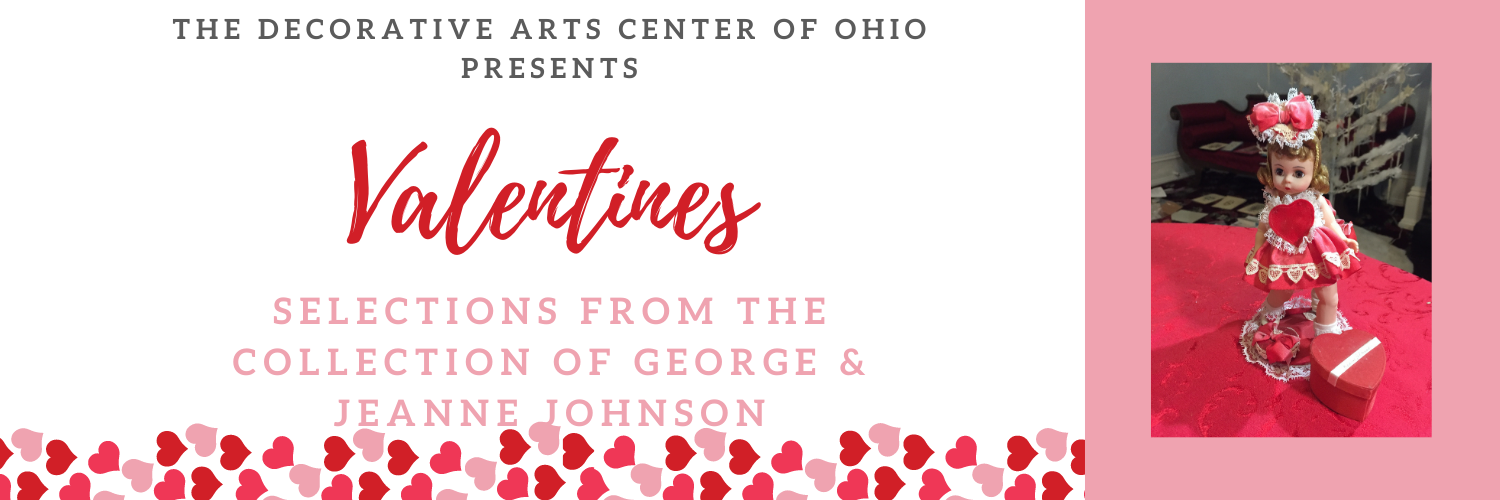
A large floral and gold ring card from 1851 that Johnson acquired is the perfect example of this, as not every part of the story the card shares is obvious to the eye.
With the card maker’s name, “Mansell,” embossed at the top and bottom of the center medallion, the paper is watermarked “Twogood 1851.” The card opens, but there is no interior message—a feature Johnson says was not unusual during this time since great care had been given to embossing the cards on a copper plate and hand painting them with watercolors.
“In the early ones, there was no greeting on the inside so the sender could put their own thoughts in them,” he says. “Sometimes they were blank and they may not have had words inside, but that doesn’t mean they weren’t used.” In fact, some of the cards Johnson has collected over time have come with stamped envelopes, signaling that they were in fact sent even though there was no message inside.
“Imagine that you must have paid 5 cents in 1790, which was a lot of money, for a beautiful Valentine, and you smear ink or write the wrong word,” he said. “So you may have written a separate letter and inserted it in the Valentine.”
The border displays beautiful perforated lacework showing roses and various other flowers and foliage, while the center is embellished with applied silvered paper flowers, garlands, a gilded wreath and painted flowers and garlands.
The gilded motto of “Remember me” is at the top and a gold ring is displayed at the bottom—something Johnson says may uncover the sender’s intentions. “A gold ring on a Valentine is often considered to be a proposal of marriage,” he said.
Addressed to “Sue S. Slaton, Martins Ferry, Ohio,” the card was sent on Feb. 24 from Wheeling, Virginia. Johnson says this may catch the eye of someone today, but notes Wheeling was part of Virginia until 1863 when West Virginia became a state.
Inside the envelope is a handwritten note, “According to Mrs. Edna Buckwalter this Valentine came on Pony Express dated 1851.” Research indicates, however, that the Pony Express did not ride between Wheeling and Martin’s Ferry, leaving Johnson to believe that it is likely a postal rider who delivered the Valentine.
This proposal Valentine is just one of more than 100 valentines that Johnson shares as part of a special Valentine’s Day exhibition in February at the Decorative Arts Center of Ohio. The exhibition, due to COVID-19 restrictions, will be entirely online, offering a unique opportunity for people from around the world to view these snapshots in time through the lens of Valentines Day.
With cards ranging from the late 1700s to around 1950, the exhibition reflects nearly 150 years of valentines, Johnson says.“I tried to pick out Valentines that were interesting and had a story that went with them,” he said. “There are Valentines that have actual dates on them, as well as poetry and other notes in them.”
His collection has grown thanks to a variety of sources, from antique stores and dealers to museums that have gone out of business and sold their collections. It can be difficult for Johnson to choose his favorites, because each has its own unique features and story. He often imagines what the stories could be behind each, such as an 1849 Irish Valentine mailed from Zanesville, or handmade school valentines that children exchanged during the Great Depression in the 1930s.
“I find it interesting that a mother or older child sat down and made these valentines so they could have something to put in the Valentine’s Day box at school,” Johnson said. “One is a recycled Christmas card, and one is a page cut out of a wallpaper book or a Sears and Roebuck catalog glued together.”
Although a virtual exhibition does not offer the opportunity to see these Valentines in person, Johnson says it offers visitors the chance to see the notes in more detail. “If you would have come last year, you may have seen the valentines, but not seen all that it offers,” he said. “The vast majority are at least over 100 years old, so they’re fragile, and I can’t open and close them a hundred times during an exhibition.”
This year’s online exhibition, however, will offer photos and video, which can show individuals viewing the exhibition all aspects of the valentines without opening them repeatedly.
“So that’s a major advantage of a virtual tour,” he said. “It’s also a way to make a historical record of these 200-year-old Valentines.”
If you would like to sign up for our mailing list to learn more about special exhibitions like this, please email [email protected]. Stay tuned for the virtual tour, available Feb 1.

 RSS Feed
RSS Feed